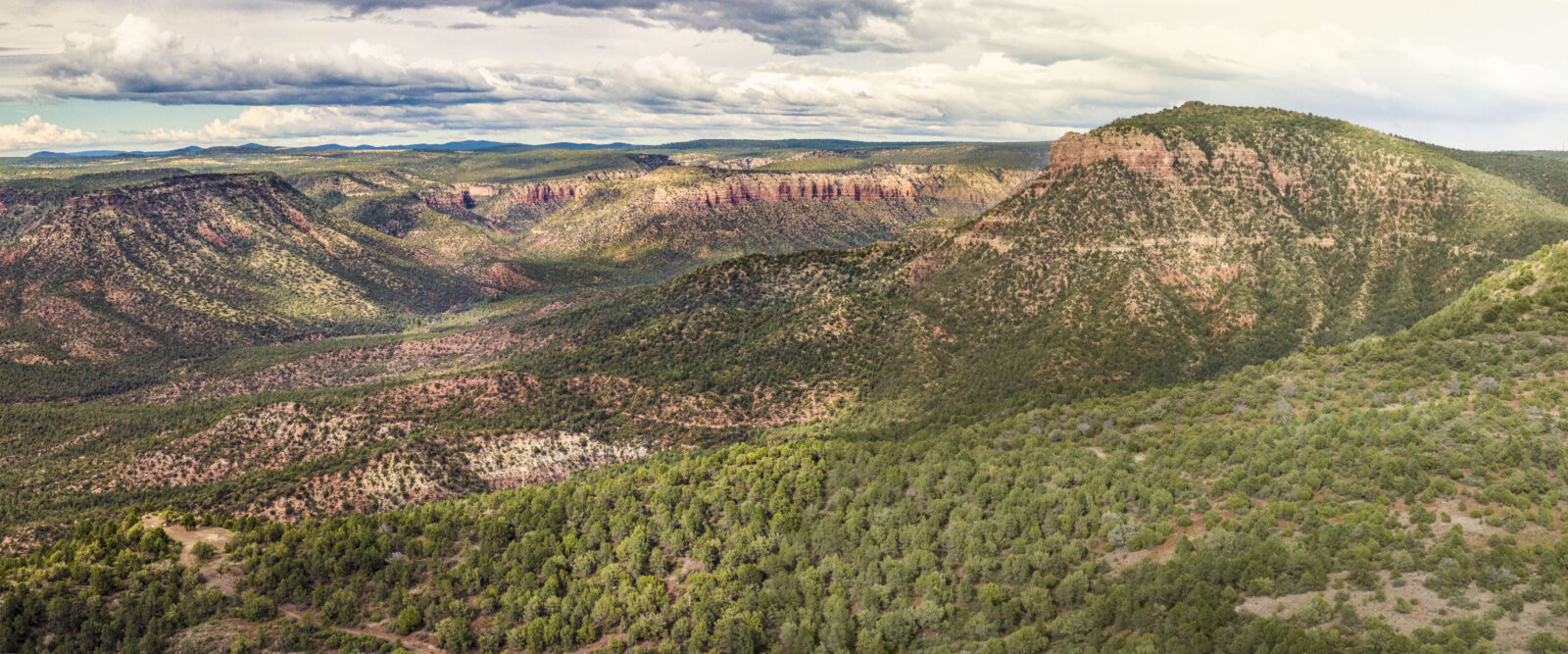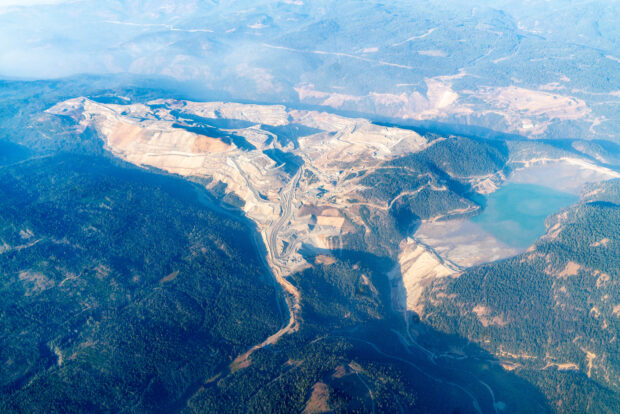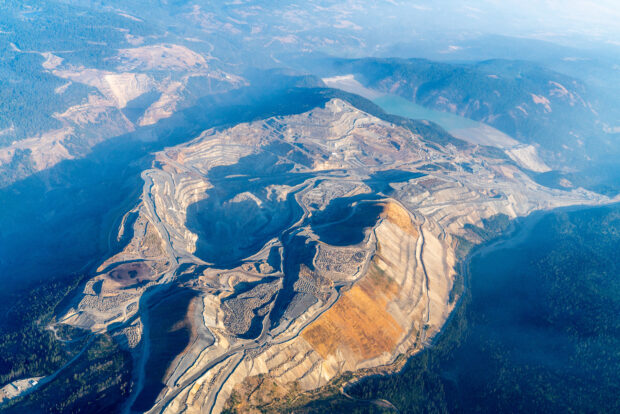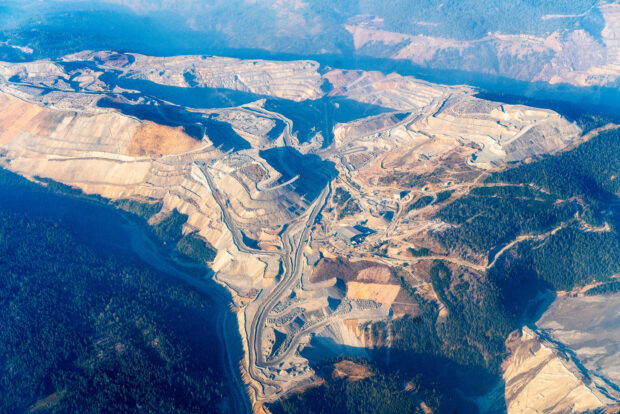We have much more to do and your continued support is needed now more than ever.
Water Is Life—and Central To Environmental Justice for Indigenous Communities

In the Chí’chil Biłdagoteel Historic District, also known as Oak Flat, golden sunlight illuminates the dramatic rock formations that are littered among the groves of large oak trees. While under the umbrella of the Tonto National Forest, Oak Flat is part of the ancestral homelands of the San Carlos Apache, the Yavapai, Hopi, Zuni, and many other Tribes and Pueblos in the Southwest.
This high desert region east of Phoenix seized my imagination recently, after traveling from my home in the Pacific Northwest where it had been a particularly gloomy winter. As the beauty of Chí’chil Biłdagoteel sinks in, several members of the San Carlos Apache Tribe describe their connection to this sacred site and the future that awaits it with a proposed massive copper mine that will be operated by two foreign companies: Rio Tinto and BHP. It’s not pretty. Unless Congress adopts protective legislation, this irreplaceable cultural and religious site will be destroyed, leaving behind a crater approximately two miles wide and 1,000 feet deep.
But that’s just part of the story. Block cave mining, which is how the copper will be extracted, will not only decimate the landscape and the irreplaceable cultural and religious sites for the Apache and other Indigenous peoples, but it will also drain the region’s critical resource: water. Operations would consume the water equivalent to what 140,000 people would use in 40 years, at a time of extreme drought, while threatening to contaminate local groundwater with toxic tailings.
Let’s Rethink Our Relationship with Water
Water is life. Water connects us all. And water is a pressing environmental justice issue. Improving access to water and ensuring clean drinking water now and for future generations are among key pathways toward rectifying historical and ongoing wrongs to Tribal and Indigenous communities and other marginalized communities. This issue is ever more urgent against the backdrop of an escalating water shortage across the West . As we center the conversation on how we plan for a future with less water, we must ensure equity in that plan.
Sadly, reckless mining projects that put precious watersheds at risk span the country and across borders. A case in point comes from my own backyard, in the Pacific Northwest. British Columbia plans to double the number of mines along waters that flow into U.S. communities. Lax regulations in Canada have serious downstream consequences for the health and well-being of communities in Alaska, Washington, Idaho and Montana.
Is that fish safe for me to eat?
As rivers flow away from BC mines and toward the United States, the threats are two-fold. The first, the discharge of toxic metals flowing into rivers and lakes, has already surfaced and is playing out in communities across the Northwest. Native communities are hardest hit. In the video above, Tribal members recount finding deformed fish and, amid a steady stream of contamination warnings, they are struggling to secure critical food sources. The concerns have spread to the gathering of medicinal plants, robbing Indigenous families of the natural resources that are central to traditions and physical health.
“Pollution flowing from the Elk Valley coal mines in Southeast British Columbia has increased to record levels throughout the Confederated Salish and Kootenai Tribal region, endangering our waters, fish, and health of our communities…”
Rich Janssen, director of natural resources for the Confederated Salish and Kootenai Tribes
Remember Mt. Polley?
The second threat, which we’ve witnessed with the 2014 Mount Polley mine disaster, is even more daunting. This entails the collapse of tailings dams, the structures that hold back millions of gallons of arsenic, mercury, and other toxic mining waste. As mining operations get bigger, operators build mega-dams to hold back ever increasing quantities of toxic waste. The danger grows as infrastructure requirements have failed to keep up with the increased frequency of extreme climate events, such as flooding.
Studies have shown these tailings dams will fail. Last year, Conservation Northwest and the Colville Tribes commissioned two reports to assess the probability and likely impact of a tailings dam failure at the Copper Mountain mine in British Columbia. One report found that even a mid-range failure (the release of 40 percent of mining waste) would release a debris flow that within 90 minutes would cover the city of Princeton in over 30 feet of mining waste. A companion report estimated an annual probability of failure of a dam to be 1 in 1,000 to 1 in 100. According to most U.S. and Canadian guidelines, the maximum probability of failure should be under one in a million.
While the Mt. Polley mine disaster quickly faded from the headlines, the irreversible destruction continues to upend lives in small Tribal communities. Over 6 billion gallons of toxic waste poured into the surrounding salmon-rich habitat, contaminating Polley Lake, Hazeltine Creek, and Quesnel Lake—a source of drinking water. Nuskamata (Jacinda Mack) of the Secwépemc and Nuxalk Tribes was on the frontline of what is cited to be the largest environmental disaster in Canadian history.
“It was felt like a death in our community,” she said. “It put everything at risk. Our medicine, our ceremonies, being able to be out in that place, our villages were scoured from the earth,” she said. “It’s really difficult to describe unless you’ve gone through it. There’s such a feeling of devastation and death.”
Walking a dangerous line
Line 5—a 645 mile-long pipeline that runs from Superior, Wisconsin to Sarnia, Ontario—has a long history of unleashing environmental damage. In the last 50 years, the pipeline has had at least 33 spills, releasing a total of 1.3 million gallons of product into the environment.
Line 5 is a ticking time bomb in our Great Lakes that is threatening to spill millions of gallons of oil into some of the largest freshwater lakes in the world, essential habitat for wildlife, and the foundation of local economies.
A University of Michigan study concluded this is the worst possible location for an oil pipeline in the Great Lakes. The unpredictable currents, that can be ten times the strength of Niagara Falls—and change directions every few days—make oil recovery nearly impossible.
Currently, Enbridge Energy, which owns and operates Line 5, is proposing a tunnel as a “safe alternative” to the pipeline path through the Straits. But experts warn this is neither a compromise nor a safe way to continue operating Line 5. In fact, Bay Mills Indian Community filed testimony from experts who agreed that significant explosion risks worry them when it comes to the proposed tunnel.
From the risk of a methane leak causing explosions—like the ones that killed three workers in the Milwaukee Deep Tunnel Project and caused the Lake Huron Water Tunnel explosion—to the Natural Gas Liquids (NGLs) and crude oil being transported through Line 5, geologists, engineers, and pipeline safety experts all agree: The tunnel isn’t safe. To make matters worse, there are no regulations for a pipeline in a 4 mile, enclosed tunnel. Regulators have no authority over Enbridge to compel them to comply with any regulations, even if they did exist.
Each day, Enbridge pockets millions and impedes on sovereign Tribal rights as it operates Line 5. Without consequence, Enbrdige is violating several legal requirements and easements, including trespassing along the Sovereign Tribal territory of the Bad River Band in Wisconsin. The Bad River Band fears that a spill on their ancestral lands would contaminate their water, poison the fish, and destroy the wild rice beds—which are all staples of their diets and culture.
This is a historical problem for Enbridge. Their gross negligence and mishandling of Line 6b led to one of the most catastrophic spills in recent history. We know that Line 5 must be shut down. Fortunately, this can be done with little to no impact on consumer energy prices. Enbridge’s own experts agreed that a Line 5 shutdown would only raise gas prices by half a cent per gallon.
When the risk versus reward is weighed, there’s no question: Line 5 must be shut down.
Read more about the work we do in the Northern Rockies, Prairies and Pacific Region HERE.
























